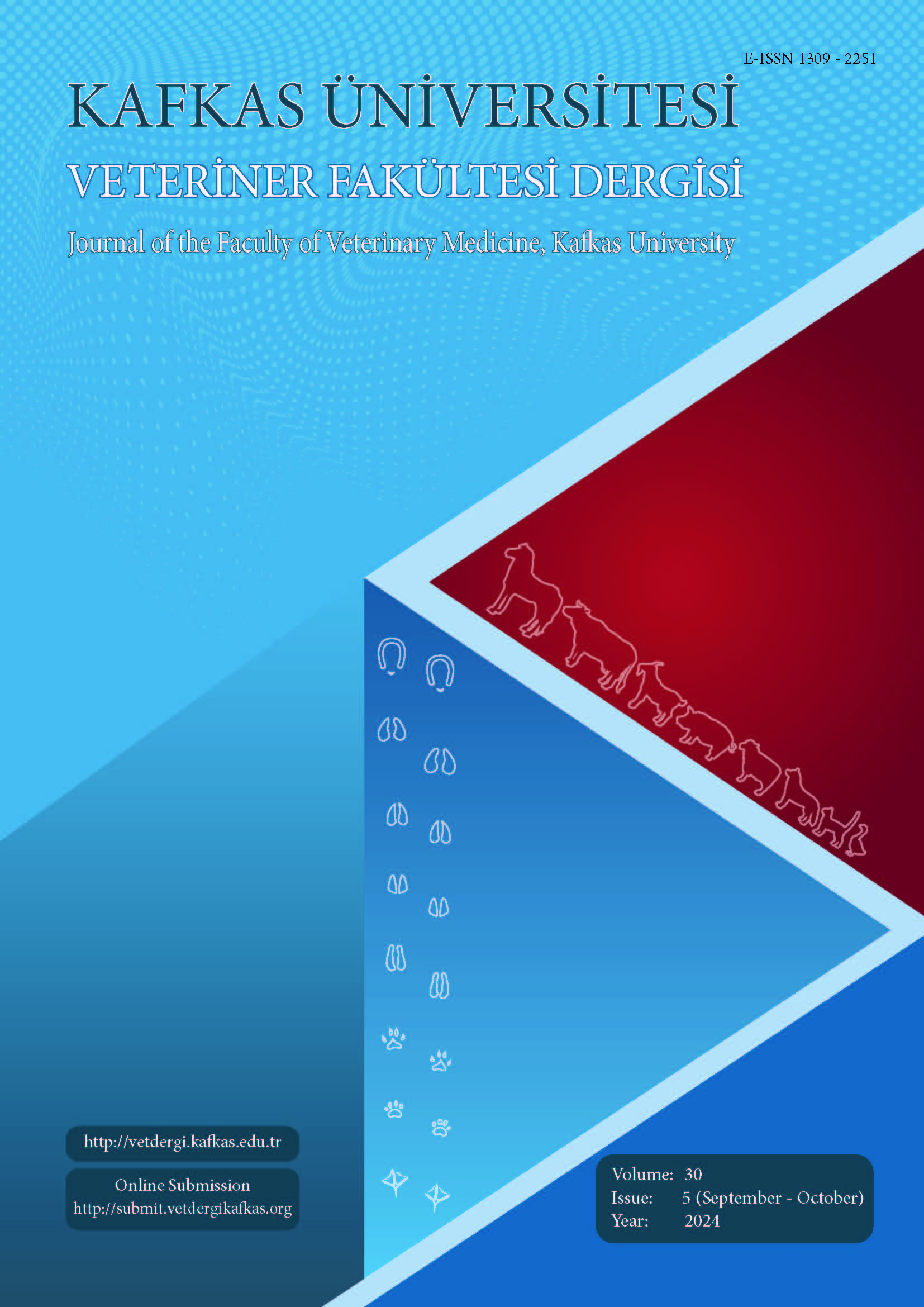
This journal is licensed under a Creative Commons Attribution-NonCommercial 4.0 International License
Kafkas Üniversitesi Veteriner Fakültesi Dergisi
2024 , Vol 30 , Issue 5
Effect of Osthole on Inflammatory Responses of Mice with Primary Sjögren's Syndrome
1Department of Geriatrics, Zhejiang Hospital of Integrated Traditional Chinese and Western Medicine, Hangzhou 310003, Zhejiang Province, CHINA2Orthopedics and Traumatology Department of Traditional Chinese Medicine, Hangzhou Tianshui Wulin Street Community Health Care Centre, Hangzhou 310005, Zhejiang Province, CHINA DOI : 10.9775/kvfd.2024.32400 We aimed to assess the effect of osthole on the inflammatory responses of mice suffering from primary Sjögren's syndrome (PSS). Fifty naive non‐obese diabetic (NOD/Ltj) mice were included to establish a spontaneous model of PSS and assigned into a control group, a 20 mg/kg osthole group, a 30 mg/kg osthole group, a 40 mg/kg osthole group and a 50 mg/kg osthole group in a random manner. Osthole (20, 30, 40, and 50 mg/kg, once a day) together with normal saline (every day) in an equal volume were injected into osthole treatment groups and control group, respectively. Compared with the control group, the inflammatory cells in salivary gland tissues of NOD/Ltj mice manifested gradually ameliorated infiltration, the destruction of acinar cells was relieved gradually (P<0.05). In comparison to those obtained from the control group, the inflammatory factors IFN-α, IFN-β, IL-6, IL-8 and TNF-α as well as the GMP-AMP synthase (cGAS) and stimulator of interferon genes (STING) in salivary gland tissues of NOD/Ltj mice declined gradually at the expression level as the osthole concentration augmented, showing statistically significant differences (P<0.05). Osthole is capable of mitigating inflammatory responses of PSS mice by impeding the cGAS-STING signaling pathway. Keywords : Osthole, rimary Sjögren's syndrome, inflammatory responses










